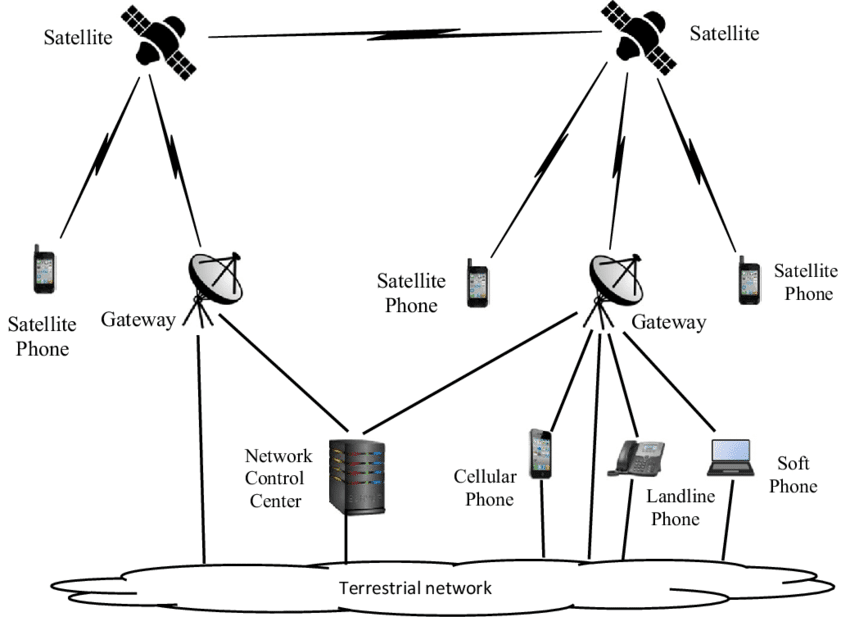The mobile satellite services market was worth US$ 5.6 Billion in 2022 and is predicted to be worth US$ 10.4 Billion by 2032, growing at a CAGR of 6.4% during the forecast period.
The use of satellite communication services for IoT and disaster management in developed nations is projected to drive the mobile satellite services market throughout the forecast period.
Enhancing 5G mobile networks with next-generation satellite capabilities allows mobile satellite operators to play an important role in the growing 5G ecosystem.
The rise in demand for mobile satellite services, the increased integration of mobile and satellite technologies, and advancements in digital technology all contribute significantly to the growth of the mobile satellite services market.
The limited available bandwidth, poor voice and data quality in weak signal situations, and increased government limitations on the usage of satellite technology limit mobile satellite services market development.
Development in the Internet of Things (IoT) trend, allocation of extra bandwidth for mobile satellite services, and increased rivalry in the Internet service market present several prospects for growth.
The main barrier to mobile satellite services market expansion is a lack of confidence about the dependability of mobile satellite services across different geographies.
In terms of acceptance, the United States is among the leading inventors and pioneers, and it is one of the major markets for mobile satellite services.
The region’s mobile satellite services market is expanding due to increased demand for mobile satellite services from end-user industries. The region’s technical infrastructure has evolved, and network connection has improved.
The region’s government agencies have made substantial efforts to establish new satellite and navigation systems, which have aided the expansion of the mobile satellite services market.
Key Takeaways
- In the service type sector, data services from the mobile satellite services market are anticipated to flourish at the quickest CAGR of 6.8% during the forecast period.
- With a CAGR of 4.8% through 2032, military & defense are predicted to grow significantly in the end-use industry sector of the mobile satellite services market.
- The market size for mobile satellite services in the United States is expected to reach US$ 1.6 Billion by 2032, growing at a CAGR of 5.5% during the forecast period.
- United Kingdom is expected to reach a market size of US$ 672.6 Million in mobile satellite services by 2032, with a CAGR of 6.1% during the prediction period.
- China’s mobile satellite services market is expected to be worth US$ 474.1 Million by 2032, with a CAGR of 5.6% over the forecast period.
- Japan is expected to have a market size for mobile satellite services of US$ 384.2 Million by 2032, with a CAGR of 8.7% during the research period.
- By 2032, India is expected to reach a market size of US$ 276.8 Million in mobile satellite services, with a CAGR of 8.0% during the research period.
Competitive Landscape
Due to significant capital expenditure, the mobile satellite services market is characterized by moderate competition. Performance, dependability, product features, quality, and innovation are all factors in rivalry.
Ericsson Inc., Globalstar, Inc., Inmarsat Holdings Limited., Iridium Communications, Inc., Orbcomm Inc., Echostar Corporation., Intelsat General Corporation., Singtel Ltd., VirSat Inc., and Telstra Corporation Limited are among the companies profiled in the report for their comprehensive mobile satellite services market analysis and profiles.
Recent Developments
- In May 2017, Newtec Inc. released the MCX 7000 multi-carrier satellite gateway for an advanced end-to-end primary destitution system, which is a notable advancement in satellite technology.
- Dec 2019: Apple, Inc. is working on satellite services to enable internet access to the gadget. Furthermore, the firm is concentrating on using next-generation wireless technologies and communication satellites to give more exact position tracking with better mobile maps and functionality.
- Telstra, an Australian communications operator, has launched 5G mmWave using a 26GHz frequency band in collaboration with Ericsson in February 2020. This mmWave can be effectively scaled, tested, and incorporated into a commercial mobile network.
- Viasat and Visiontec have expanded their collaboration to deliver high-quality connection and internet access in Brazilian homes. Viasat is focusing on growing its Brazilian client base and mobile subscriptions. Viasat offers high-quality, high-speed internet access to Brazilian households. This increase in mobile subscriptions will lead to increased market growth in the mobile-satellite service sector.
- Kathrein’s antenna and filter have been bought by Telefonaktiebolaget LM Ericsson. This acquisition has enlarged Telefonaktiebolaget LM Ericsson’s radio system with a new product line and strengthened its antenna capabilities. These improved capabilities will assist the organization in meeting the needs of customers for 5G services and beyond. With this acquisition, they have combined radios and antennas to provide clients with next-generation services.
Stuck in a neck-to-neck competition with other brands? Request a custom report on Voice-based Mobile Satellite Services-Demand Report































